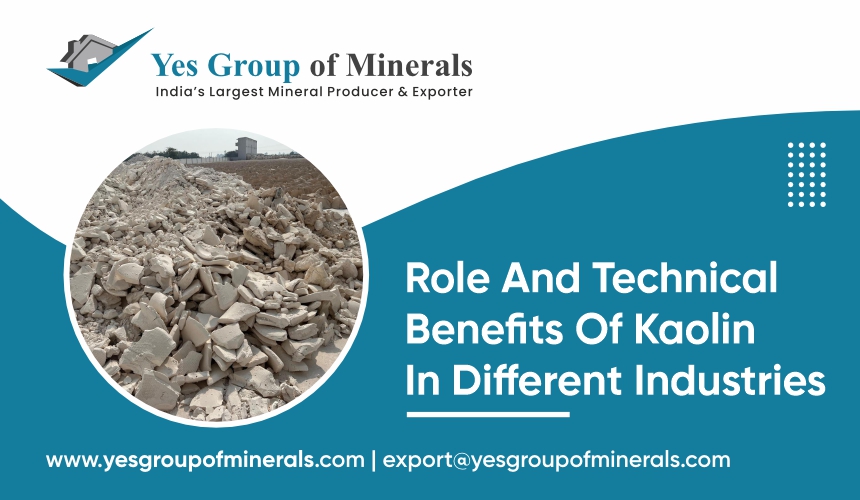Emergency? Call us now



Kaolin, a naturally occurring hydrated aluminum silicate (Al₂Si₂O₅(OH)₄), occupies a pivotal role across a wide range of industries due to its exceptional chemical composition, particle morphology, surface chemistry, brightness, rheological properties, and inertness. This article provides a comprehensive exploration of kaolin’s roles and its technical benefits in various industrial sectors — including ceramics, paper, paint and coatings, plastics, rubber, pharmaceuticals, agriculture, construction, and advanced applications like nanocomposites and environmental remediation. Particular emphasis is placed on kaolin's physicochemical properties, their impact on process performance, product quality, cost efficiency, and innovation in material design.
Kaolin, also known as "China Clay," derives its name from the Chinese "Kao-ling" meaning "high ridge," the site of its earliest known mining. It is primarily composed of kaolinite and minor amounts of quartz, mica, feldspar, and anatase. The distinct layered structure, platy morphology, particle size distribution, chemical inertness, and high brightness have made kaolin an indispensable mineral.
Key properties:
Types of Kaolin:
Each type is engineered for specific industrial functionalities.
Role:
Kaolin acts as a fundamental raw material in ceramics due to its refractory nature, plasticity, whiteness after firing, and chemical purity.
Technical Benefits:
Applications:
Role:
Kaolin is used as a filler and coating pigment to improve paper appearance, printability, and physical properties.
Technical Benefits:
Brightness and Opacity: Enhances whiteness and opacity of papers.
Printability: Improves ink absorption and print sharpness.
Rheology Control: Modifies viscosity for better machine runnability.
Cost Reduction: Replaces expensive wood pulp, reducing production costs.
Applications:
Role:
Kaolin functions as an extender pigment and rheology modifier in paints and coatings.
Technical Benefits:
Applications:
Role:
Kaolin serves as a functional filler in thermoplastics, thermosets, and elastomers.
Technical Benefits:
Applications:
Role:
Kaolin is widely used as a semi-reinforcing filler in rubber compounding.
Technical Benefits:
Applications:
Role:
Kaolin finds applications due to its inertness, absorbent, and gentle abrasive nature.
Technical Benefits:
Applications:
Role:
Kaolin is used as a crop protectant and soil conditioner.
Technical Benefits:
Applications:
Role:
Kaolin acts as a pozzolanic material and additive in construction materials.
Technical Benefits:
Applications:
Kaolin nanoclays are exfoliated and incorporated into polymers to create materials with superior barrier, mechanical, and thermal properties.
Calcined kaolin is used in fluid catalytic cracking (FCC) catalysts to enhance performance in petroleum refining.
Kaolin-based adsorbents remove heavy metals and organic pollutants from wastewater.
Research indicates kaolin as a precursor for producing aluminosilicate-based anode and cathode materials.
Sustainability: Increasing use of kaolin to lower environmental footprint across paints, plastics, and paper by replacing petroleum-based ingredients.
Advanced Ceramics: Ultra-high purity kaolin for aerospace and electronics.
Biodegradable Plastics: Kaolin-enhanced biopolymers for greener solutions.
Functional Coatings: Kaolin in smart paints with self-cleaning or anti-microbial properties.
Energy Storage: Development of kaolin-derived nanomaterials for batteries and supercapacitors.
Kaolin’s unique physical and chemical attributes position it as a versatile and technically indispensable material across myriad industries. Its critical functionalities — from mechanical reinforcement and rheological control to optical enhancement and environmental sustainability — are only beginning to be fully appreciated in the era of advanced material science.
Ongoing innovations in kaolin processing, surface engineering, and hybrid material development are rapidly expanding its industrial footprint. As industries globally move toward greener, smarter, and more efficient solutions, kaolin will continue to serve as a cornerstone mineral, delivering multifaceted technical and economic benefits.